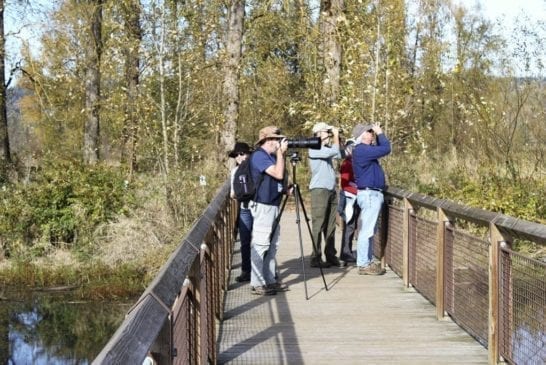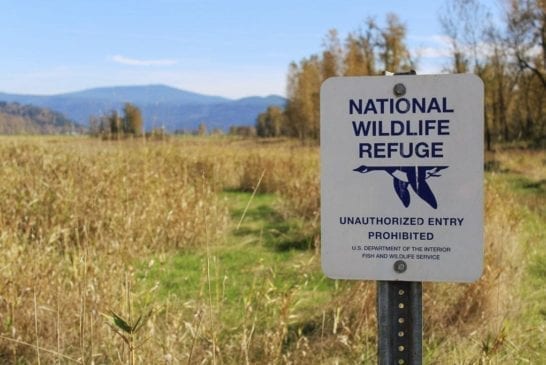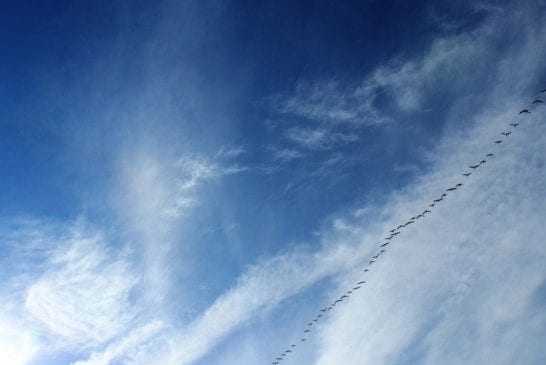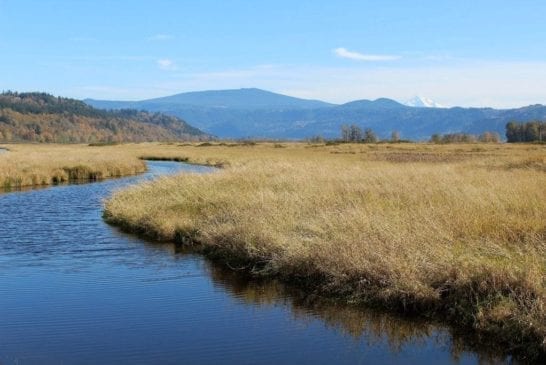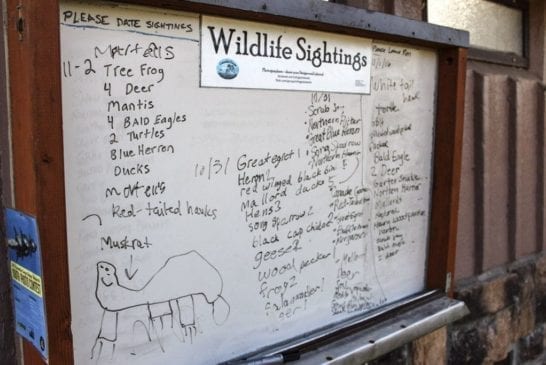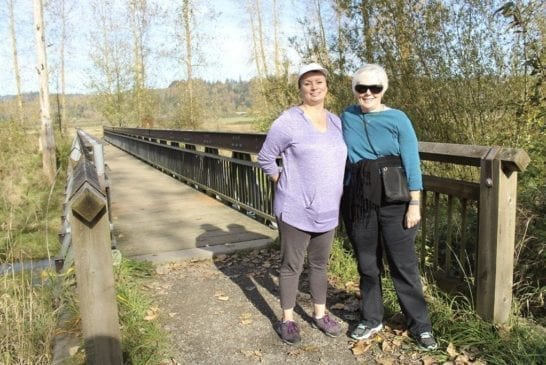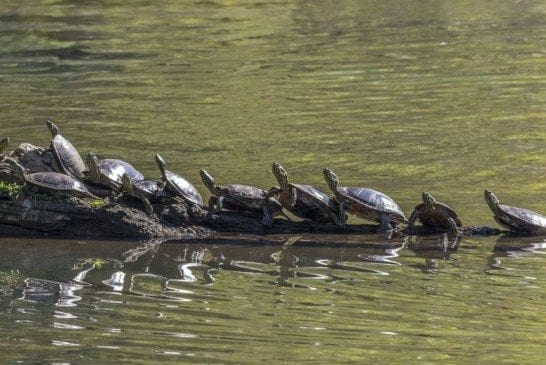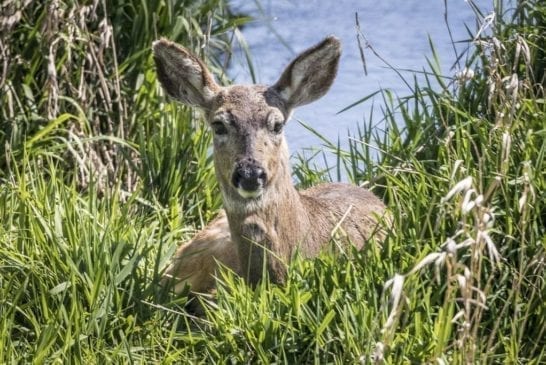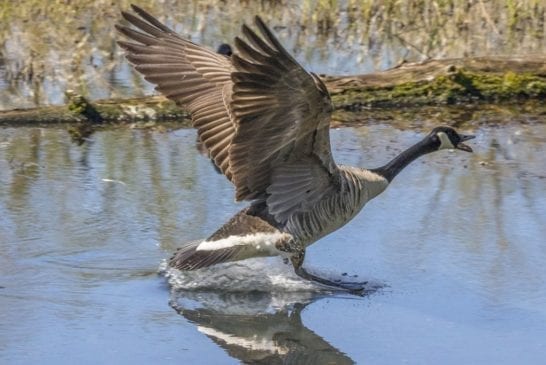WASHOUGAL — If you’ve ever walked the trails that wind through the Steigerwald Lake National Wildlife Refuge near the easternmost edge of Washougal, you understand that feeling of peace and relaxation that overtakes most refuge visitors.
“I just like being able to absorb and feel the spirit of nature,” says Bev Hatzenbeler. The 70-year-old Washougal native says she’s spent her entire life in the area, but had not, until just this week, visited the wildlife refuge.
“I had walked the levee before,” Hatzenbeler says, referring to a connecting trail system that takes visitors on a levee path near the Columbia River. “But I’d never come into the refuge.”
On this incredibly sunny and unseasonably warm November day, Hatzenbeler is walking the refuge trails with her friend, Crystal Ramsey, of Camas. Ramsey has been to the refuge a few times before and says she feels calm there.
“The trail is easy to navigate and it’s just a beautiful place,” Ramsey says. “And I like that they have information and artwork along the path.”
On this Thursday afternoon, Ramsey and Hatzenbeler say they’ve already seen a great blue heron swooping down near the refuge entrance and believe they may have spotted a bald eagle.
The 1,049-acre refuge, which sits just east of Washougal along Highway 14, includes a variety of wetlands, pastures and woodlands and is home to a staggering variety of wildlife. According to the U.S. Fish and Wildlife Service, 200 of the 300 bird species seen in Clark County have been observed at the Steigerwald refuge.
Established in 1987 and opened to the public in 2009, the refuge includes a nearly three-mile-long art trail that winds its way through pastures with views of Mt. Hood, through a copse of trees and across two footbridges that lead visitors to Steigerwald Lake. Here, you’ll find visitors with binoculars and long-lensed cameras, transfixed on the ducks, turtles, swans and turkey vultures, geese, eagles and harriers that live in and venture through the refuge all year long.
The Gibbons Creek Wildlife Art Trail is open from dawn to dusk all year, although a seasonal spur closes in the fall and winter months, from October through the end of April, to provide a sanctuary for waterfowl wintering at the refuge.
For many members of the community, the refuge is a haven, a place to get away from the stress of urban life. Betsy and David Kolasky, from Southeast Portland, say they come to the refuge at least six times a year to see the various waterfowl and to enjoy the peace and quiet. On Thu., Nov. 3, the Portland couple met up with another set of Portlanders — Chris Robertson and Jacque Abel — on the bridge over the Steigerwald Lake. The couples had seen refuge volunteer Randy Kobelin, a Washougal resident, standing on the bridge with his camera, focused on a western painted turtle sitting on a log.
Kobelin explained that he had recently retired and decided to buy a good camera lens and devote time to helping local refuges. He splits his time between Steigerwald, where he works as a trail steward, and the Ridgefield National Wildlife Refuge, where he works as a volunteer at the Cathlapotle Plankhouse, an educational and interpretive center used by the Chinook Indian Nation for cultural events throughout the year and open to the public on weekends from mid-April to the beginning of October.
Kobelin says he never really visited the nearby refuge before his retirement, preferring the larger Ridgefield refuge, but that he’s since been won over by Steigerwald’s natural beauty, abundance of wildlife and serenity.
“It’s an easy walk and people can connect to the levee trail and make a longer walk out of it,” Kobelin says of the Washougal area wildlife refuge.
That’s exactly what James Cabales, of Washougal, likes to do. He’s been coming to Steigerwald since it opened to the public and walked the levee trail before that. Cabales says he walks a three-mile loop at least three times a week and comes to the refuge all year, during all types of weather. Some of his most memorable wildlife sightings include a group of bitterns picking up food and a pair of pheasants protecting their brood.
November is the beginning of tundra swan season at the Steigerwald refuge and visitors are likely to see large flocks of the swan Meriwether Lewis once nicknamed “the whistling swans” (for the whistling sound their wings make) collecting near Steigerwald Lake from November through March.
“Usually you see a number of them out there,” Robertson, the visitor from Northeast Portland, says, pointing toward the lake. “But maybe it’s too early for them?”
Kobelin nods and says the swans are more common during the winter months, but that they should arrive soon at the Steigerwald refuge.
“We’ll see more migratory birds soon,” Kobelin says. “Right now, you’ll probably see the sandhill cranes and piles of Canadian geese.”
As you exit the refuge, visitors have recorded the various animals and birds they saw that day. On Wed., Nov. 2, visitors saw two tree frogs, four deer, four bald eagles, two turtles, a blue heron, ducks, red-tailed hawks and, as one child’s funny drawing pointed out, one muskrat.
To learn more about the Steigerwald Lake National Wildlife Refuge, visit their website or simply make the drive to the refuge yourself. The parking lot to the main trailhead is located off Highway 14, east of Washougal, near mile marker 18. The area is also accessible by public transportation using the Gorge West End Transit bus. The refuge is open during daylight hours, has no user fees, and, because it is a wildlife refuge, companion animals (except certified service animals) like horses and dogs are not allowed.




